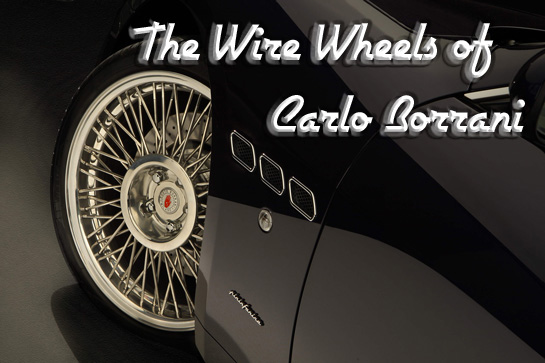
The latest wire wheel from Ruote Borrani is the X Ray, here making a big difference for the Maserati GTS.
In 2010, Borrani Americas partnered with Ruote Borrani Milano to be the exclusive importer and restorer of Borrani rims in North, Central and South America, thus bringing to the forefront a very relevant new story with a significant historical aspect that is rarely told. Our thanks to Ruote Borrani Milano, Borrani Americas, Roberto Motta, and David Seielstad for their help with this article.
For classic car enthusiasts, the name Borrani is synonymous with excellence. Their famed wire wheels have become an icon, known for quality, performance and design. In fact, the strength of Borrani is in its history and quality of its products. Borrani is still producing quality products, including their famous Borrani Classic wire wheels and new line of Xray, Sray and Bi Metal alloy wheels.
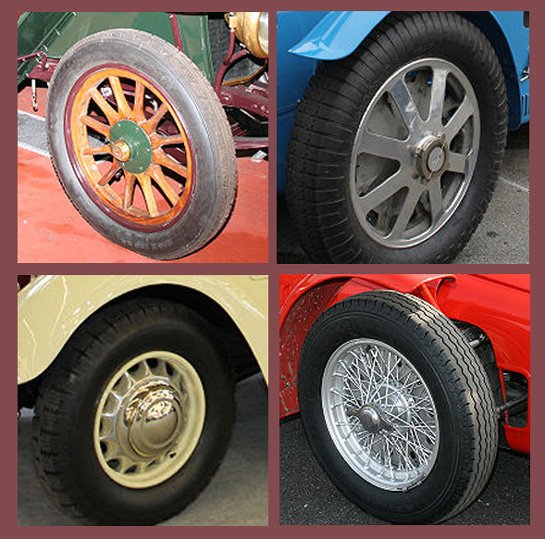
Wheels through the ages; 1914 wooden wheel, Bugatti, 1927, Peugeot, 1936, and Maserati 1951. Hugues Vanhoolandt photos
![rudge-3[1].-300](https://velocetoday.com/wp-content/uploads/2011/07/rudge-31.-300.jpg)
An advertisement from 1934. The 4CM 1100cc Maserati of Engineer and record breaker Giuseppe Furmanik sets a new record of 138.34 mph along the Florence-Pistola Autostrada using Borrani Rudge Whitworth wheels.
Borrani is the best known manufacturer of wire wheels, and they are also a large part of the history of the automotive wheel, a subject that is generally taken for granted. The automobile wheel has evolved from a wire bicycle wheel used on the small pioneering cars of Benz and Ford to a sturdy wooden-spoked affair capable of withstanding deeply rutted country roads. In the 1920s a lighter, pressed steel wheel which was widely used throughout out the industry and remains the stable for production cars today. In the 1950s, the use of all alloy aluminums and magnesium wheels became popular and that too, remains a constant to this day.
Borrani History
Overlapping this wheel evolution is the wire wheel. In use before the turn of the century, the wire wheel came into its own in 1908, when the British cycle company of Rudge Whitworth patented the method of a splined axle stub and locking central nut. The ability to change tires quickly was essential for racing and only Bugatti dared to leave the Rudge Whitworth fold with the spoked aluminum wheel of the Type 35. The center lock wire wheel was virtually universally adopted for racing, sports cars as well as many street and luxury cars, and remains with us today. Rudge Whithworth allowed its patent to be licensed. It remained for a wise and eager entrepreneur to expand the Rudge Whitworth patent to the European continent. Enter Carlo Borrani from Milan.
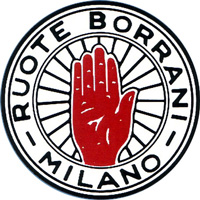
Founded on April 22, 1922 by Carlo Borrani with the objective to produce and market wheels for cars, motorbikes and cycles, “Rudge Whitworth Milano” was established in Milan having a share capital of 1,220,000 Lira. It was located Via Ugo Bassi 9.
In less than a year, Borrani wheels became the choice of leading race car manufacturers, as well as standard equipment or luxury options on the production cars of Alfa Romeo, Lancia, Mercedes Benz and many others.
Wire wheels were light, safe and strong; they could easily be engineered and constructed for a variety of widths and diameters, from a small motorbike sized wheel for a Fiat 500 “etceterini” to the rear wheels of the giant 400 hp Mercedes Benz Grand Prix cars of the 1930s. In the 1930s Borrani began experimenting with light and rigid aluminum alloys for the wheel rims which would replace the traditional steel rims. By the late 1930s, the company changed its name to Carlo Borrani S.p.A.
Borrani supremacy
Borrani’s wire wheels seemed endless, ageless, and added beauty and class to almost any vehicle. They were painted or chromed, had aluminum rims or steel rims, were outfitted with a hexagon lock nut that used a large socket, a two eared flat “knock off” that was removed and fastened with a soft hammer, and finally a beautiful outward angled three eared knock off that was a focal point of the 1962 Ferrari GTO. Ironically, in the 1920s and 30s the beauty of the wire wheel became so common that a new industry was created to produce elaborate and attractive cover to hide the wire wheels!
Throughout the 1940s and the 1950s the wire wheel rolled supreme at Ferrari and most other high performance and sports car manufacturers (Maserati offered the Borrani ‘bi metallic’ discs—steel discs with aluminum rims– as standard equipment on the production 3500 and wires as an option). It was a grand tradition… any sports car worth its salt simply had to have wire wheels and very few escaped the trend (Corvette and Porsche being notable exceptions).
Growth continued and in the 1950s, the company again changed its name, to “CMR” Construzioni Meccaniche Rho S.p.A., but the wheels still were linked to the Ruote Borrani Milano trademark. Production increased from 1000 to 1500 wheels per month with Ferrari being the biggest customer, and a full ten percent of production was allocated to racing car wheels.
Borrani does Detroit
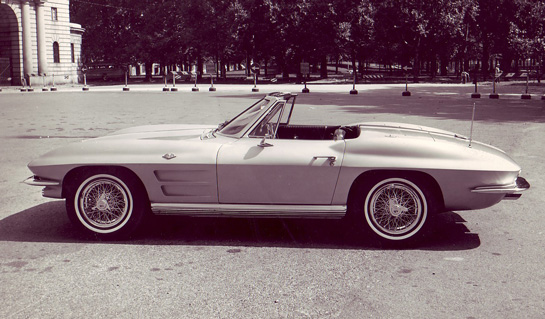
The one that got away. Corvettes never came with wire wheels, but Borrani supplied a hub kit for many GM cars. Courtesy Ruote Borrani.
Into the seventies, Borrani offered four different models of wheels:
Standard: Center lock wire wheel with steel rim
Record: Center lock wire wheel with aluminum rim
Bolt on: Special wheel with direct mounting wheel bolts
Kit Transfer: Conversion kit to Rudge center lock system
Detroit beckoned. Did you know that you could get Borrani wire wheels for your GM car? Those Kit Transfers were designed for many Buicks, Cadillacs and Chevrolets built from 1946 to the mid 1970s.
Gone in sixties seconds
Perhaps nothing so beautiful could last forever. Would the wire wheel go the way of the wooden spoked wheel? Demand for wires seemed to peak in the late 1960s, and the aftermarket alloy and magnesium wheel became popular for street cars. In Grand Prix racing, where the wire reigned supreme, changes were afoot. With the appearance of Lotus, Cooper, the roadster at Indy, the wire wheel in Formula One racing was soon gone, replaced by the Lotus “wobblies” (so called because of the wavy or “wobbly” design). There were early signs; the Type 35 Bugatti in 1924, the first post war appearance of Formula III Cooper 500s with strange looking aluminum wheels, BRM discs in 1957-8 and Vanwall wobblies shortly thereafter. But few ever thought that the wire wheel would ever be replaced. But 1963, they would vanish from the Grand Prix scene forever. The same trend would affect sports cars and GT racing, but it took a few more years.
And what was the reason? Magnesium alloy wheels were stiffer. Along with the rear engined revolution came better handling, and stiffer wheels contributed in no small part to that improved road holding. Mags were also much lighter, and at first they even discarded the center locking wheel nut in favor of lighter but slower four and five lug nuts. As technology improved, alloy wheels with one center nut became the norm. So one of the Borrani/Rudge Whitworth traditions is still with us, for it would be very difficult to change all four wheels in 3 seconds without a single center nut.
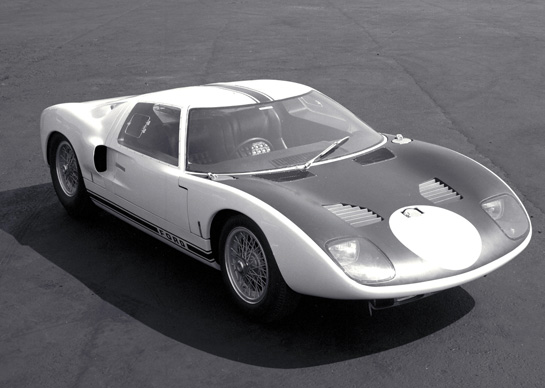
Borrani not only equipped Ferrari but the new Ford GT, seen here in 1964. The GT40 ran Borranis but mags were used from 1965 on.
Back on the street, another nail in the coffin of the wire wheel was the effect of USA DOT regulations in the 1970s which forbade the use of those wonderful knock off nuts. So if you wonder why the only street knock off nuts are now earless, that’s why.
But Borrani survived to remanufacture and rebuild wheels for the rapidly growing classic car hobby. Just as the demand for new wire wheels was diminishing, Ferraris were among the first post war classic cars to become extremely desirable, and almost all pre 1975 Ferraris used Borrani wire wheels. Borrani was there to serve the needs of a new generation of old Ferrari owners. Timing is everything!
To facilitate this growth and to provide an outlet for the new line of Xray, and Sray wheels, Borrani Americas was established in 2010 to partner with Ruote Borrani Milano to be the exclusive importer and restorer of Borrani rims in North, Central and South America through the parent company, Motion Products Inc. of Neenah, Wisconsin, a firm already well known for its superb Pebble Beach quality restorations. Their website is Borraniamericas.com
Click here for Borrani’s Facebook page
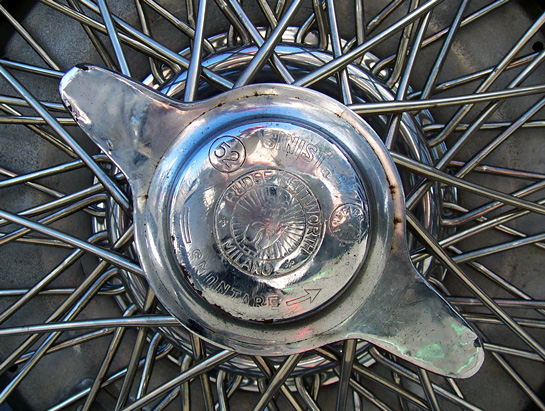
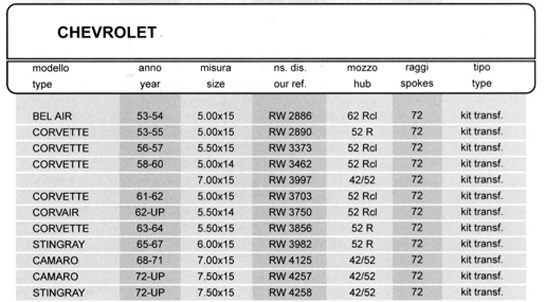
Borrani’s have been huge in motorcycling as well, and I have a good collection of them on bikes, and hanging here and there in my shop. But I am curious. The latest I have read is that some Borrani’s (for motorcycles, anyway) are made in China, go to Italy where they are stamped, Made in Italy. As one who has experienced horrendous errors in the Chinese’ use of polymers for injection molded products, should we fear the new Borranis might be a bit scary? Soft? Brittle? More easily corroded in our current environments?
MM
Unfortunately, Mark, this marketing ploy is not limited to a specific product. I do not know if current Borrani’s are actually made in China and assembled in Italy…and that is a question you should pose directly to Borrani America and then evaluate what they tell you and make your decisions based on your comfort level with that information.
But…I’ve spent a lot of time in Italy, and have heard and read many complaints by Italian clothing companies about firms which buy cloth from Italy, ship it to China, where the pieces are cut and partly asseembled, then returned to Italy for final (and minor) assmbly, where they are allowed to display a “Made in Italy” label. I believe the same it at least in part true for many products sold in the US but for all intents and purposes really made in China.
Given China’s horrible record for cutting corners and outright counterfeiting, it becomes very difficult to ascertain whether you are getting the quality you expect and are paying for on any given product.
I can’t comment on Borrani/China, but can on China/rubber. I have cars, motorcycles and bicycles with Borrani/Italian rims and have had numerous failures of tires, tubes and tubing when made in China. These failures seem to be caused by the chemical make-up of the rubber relative to time. All other countries rubber products that I have tried seem to be fine. 2-3 years and the Chinese rubber cracks and leaks. Not good for tubes and tubing.
One year (1962?) the Corvette on ROUTE 66 TV show was equipped with wire wheels, I’m not sure of the manufacturer, May have been Daytons. My old Stanguellini Formuls Junior came with several different sized Borranis so that could change the final drive gearing By installing smaller rear tires to shorten the final gearing or larger to lengthen the gearing.
Pete, a bit of Borrani knock off history. I seem to remember that Enzo noticed that the established Indy front runners were making very fast tire changes during his runs at the 500 in the early ’50’s. Through pictures he noticed the Halibrand wheels were all 3 eared knock offs (although with pin drive, not splined) and much easier to find an ear with proper leverage to knock off or on. Not sure, but I believe this led to the first 3 ear Borrani K/O.
“How Its Made” on the Science Channel did a piece on Borrani. Every part of the complete wire wheel (rim and spokes) was made in-house in Italy.
I have heard that borrani have re made the steel rims as fitted to the 1950’s and 60’s Giulia spider Giulietta spiders etc but cant find any information?
Hello Everyone,
I thought I would share a small bit of history, concerning Borrani Wheels and the Wilbur C. Hall Special, a 1964 American Sports Racer, I presently own. A College student at the University of Oklahoma, in the Engineering Department, talked his professor’s in allowing him to build a full race car from scratch for his Senior Thesis to graduate.
He had decided on using suspension and rear end parts from a wrecked 1963 Jaguar XKE. To give him the final look he wanted he had decided on a set of Borrani Wheels for his class project.
I have nine original hand typed letters from the Edward Astri Industries , who were the American Distributers for Borrani, as well as Weber Carburators. The letters date from July 27, 1963 to August 1, 1964. The letters detail that they have never done wheels for a Jaguar before, so there was a lot to work out to get them right.
If anyone has any information on this car, or this set of wheels, please email me,
Thanks,
David